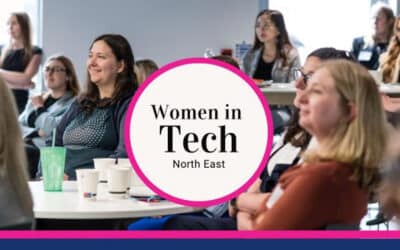Another great example of a business utilising traditional advertising is Monzo. Earlier in 2019, the challenger bank launched its first TV ad campaign, which resulted in a spike in brand awareness and downloads.
In just one month after the launch, Monzo attracted more than 250,000 new customers. The campaign, which articulated Monzo’s brand voice and promise for the first time, demonstrated how traditional methods of advertising and marketing can and do work – but it’s key for businesses to know exactly who they’re targeting with it.
While traditional media approaches do work, they are costly for many startups. However, it’s not something they should completely write off and disregard.
Providing education for your target audience can be an impactful and relatively low-cost alternative to traditional advertising. What’s more, if done correctly, this approach can see businesses generate a dedicated base of brand ambassadors among their existing customers – and the power to influence an even wider audience of prospective customers.
Understand your customer – not the market
A mistake I see frequently is the confusion of ‘market’ and ‘customer’. It’s more than just semantics – the ‘customer’ is an individual; an imperfect human who sometimes makes irrational choices. It’s exactly by working on individual customers that a company can begin to segment and conquer sections of the wider market.
For tech startups looking to communicate potentially complex ideas, or position themselves as a viable alternative to the status quo, successfully connecting with customers’ needs on an individual level is invaluable.
Businesses need to work on understanding the mindset of the customer and how they engage with their products or services. Tools like user experience labs are helpful in this way, but however you approach it, understanding the rate at which your target market is moving is crucial to the success of a product – particularly in regulation-laden, slow purchasing cycle-bearing markets such as healthcare and education.
Can customers, and subsequently the market, transition at speed, or do you need to consider a prolonged, integrated process to really create customer buy-in?
Education is key
People are more likely to trust technology if it personally benefits them, but thanks to scandals like Cambridge Analytica, customer trust in technology is at an all-time low. This means that tech companies can find it difficult to actually connect with customers on an individual level.
It’s never been more important for tech businesses to focus not just on their product or service, but how their technology will impact their customer. Humans are creatures of habit, however, and with an added mistrust of technology, education is essential for customer buy-in.
Although not a tech company, Colgate is a great example of integrating education into a product offer. In fact, their homepage dedicates a very limited amount of space to the three things they sell – toothpaste, toothbrushes, and mouthwash – but reads more like a dental advice website.
It’s important to note that education doesn’t have to be lengthy articles or website sections which require resource and time to manage. In fact, in contrast to traditional content marketing, customer education can be as simple as showing prospective customers others’ experience, as IKEA does with a homepage that pulls through tagged photos from its Instagram. A simple solution maybe, but one that allows the customer to visualise your product in their life.
Activate recently launched the LCR Tech Climbers 2019 report which showcases some of the fastest growing tech businesses in the region, some of which are taking an ‘education-first’ approach to sales and marketing.
Tickr is an app that makes it easy to invest money while also solving social and environmental problems. They share a series of informational guides on ‘investing without the BS principles’ to educate newbie investors that sign up to its platform to make sure they get the most out of their investment.
Health app reviewer Orcha also puts education at the forefront of its marketing, working with clinicians and local authorities so they understand how its review framework works, helping them to identify and even prescribe or recommend the best apps for managing health conditions to patients.
Tackling the resistance to tech
The shift from the traditional marketing and sales approaches towards one of true ‘customer education’ correlates with the wider shift of industries towards servitisation, driven primarily by social and personal financial trends.
As an example, very few people purchase cars outright anymore – most come on finance deals and are accompanied by warranties and service offerings guaranteeing a certain number of miles of performance. If you’ve purchased software lately, you’re more likely to have purchased it on a subscription model than as a one-off capital expense. Having a recurrent expense on a product can make it easier to buy by reducing the impact on our wallets, but it can also serve as a catalyst for the business building a long-term relationship with the customers through support and information.
This relationship – coupled with an education-based marketing approach – can generate a lot of leverage for startups who can’t afford to plough large sums into the more expensive forms of marketing such as traditional advertising.
Get help from those who understand your market – the right support, whether through non-execs, partnerships, networks or accelerator programmes can help startups bring their visions to life. I’m really emphasising the ‘right’ part though – you need people who have done this exact thing before. With extensive knowledge of the market, the right partners can help businesses form a sales strategy directly servicing their customers’ needs, and discover the methods which will bring the technology to the forefront of the resolution.













